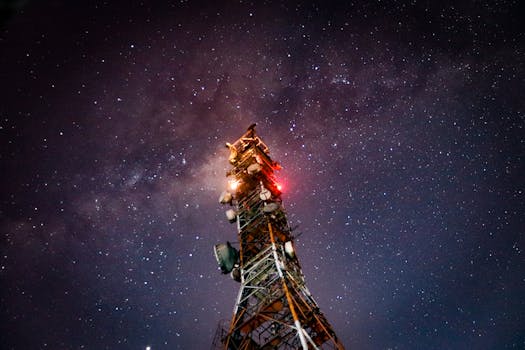
LEO satellites, or Low Earth Orbit satellites, are revolutionizing the way we communicate and access information. With their ability to provide faster and more reliable connectivity than traditional satellite systems, LEO satellites are transforming the global communications landscape. At the beginning of the LEO satellites era, it is essential to understand the technology behind these innovative satellites and their potential to bridge the digital divide.
LEO satellites operate at an altitude of around 160 to 2,000 kilometers, which is much lower than traditional geostationary satellites that orbit at around 36,000 kilometers. This lower altitude enables LEO satellites to provide lower latency and higher bandwidth than traditional satellites, making them ideal for real-time communications and high-speed data transfer. The LEO satellites constellations are designed to provide global coverage, with multiple satellites working together to ensure seamless and uninterrupted connectivity.
The benefits of LEO satellites are numerous. They offer faster data transfer rates, lower latency, and higher bandwidth than traditional satellites. They are also more resistant to interference and can provide more secure communications. Additionally, LEO satellites are less expensive to launch and maintain than traditional satellites, making them a more cost-effective option for many applications. As the demand for LEO satellites continues to grow, we can expect to see significant advancements in the technology and its applications.
LEO satellites have a wide range of applications, from providing internet connectivity to remote and underserved areas to enabling real-time communications for emergency responders and military personnel. They can also be used for Earth observation, weather forecasting, and navigation. With the ability to provide global coverage and high-speed connectivity, LEO satellites are poised to play a critical role in the development of the Internet of Things (IoT) and other emerging technologies.
In the section of LEO satellites constellations, we need to consider the challenges associated with the development and deployment of LEO satellites. One of the main challenges is the need for a large number of satellites to provide global coverage, which can be expensive and logistically complex. Additionally, there are regulatory challenges associated with the deployment of LEO satellites, as well as concerns about space debris and the potential for interference with other satellite systems.
Despite these challenges, the future of LEO satellites looks bright. With the potential to provide global connectivity and enable a wide range of applications, LEO satellites are an exciting and rapidly evolving field. As the technology continues to advance and the cost of launch and deployment decreases, we can expect to see LEO satellites play an increasingly important role in the global communications landscape. The LEO satellites will continue to transform the way we communicate and access information, offering faster and more reliable connectivity than traditional satellite systems.
In conclusion, LEO satellites are a game-changer for global connectivity. With their ability to provide faster and more reliable connectivity than traditional satellite systems, they are transforming the way we communicate and access information. As the technology continues to evolve and the cost of launch and deployment decreases, we can expect to see LEO satellites play an increasingly important role in the global communications landscape, and the LEO satellites will be the key to unlocking a more connected and equitable world.
Furthermore, the impact of LEO satellites on the environment and society is a crucial aspect to consider. The deployment of LEO satellites has the potential to contribute to space debris, which can have negative consequences for the environment and other satellite systems. However, many companies and organizations are working to develop sustainable and responsible practices for the deployment and operation of LEO satellites, and the LEO satellites will be designed to minimize their impact on the environment.
Another important aspect of LEO satellites is their potential to bridge the digital divide. Many communities around the world lack access to reliable and affordable internet connectivity, which can have negative consequences for their economic and social development. LEO satellites have the potential to provide these communities with access to high-speed internet, which can help to bridge the digital divide and promote more equitable access to information and opportunities. The LEO satellites will be the key to unlocking a more connected and equitable world, and their impact on society will be significant.
In the final section of this article, we will explore the current state of LEO satellites and their future prospects. The development and deployment of LEO satellites are rapid, with many companies and organizations working to launch new constellations and expand existing ones. The LEO satellites will continue to play a critical role in the development of the IoT and other emerging technologies, and their potential to provide global connectivity and enable a wide range of applications will drive innovation and growth in the years to come.
As we look to the future, it is clear that LEO satellites will play an increasingly important role in the global communications landscape. With their ability to provide faster and more reliable connectivity than traditional satellite systems, they are transforming the way we communicate and access information. The LEO satellites will continue to evolve and improve, with new technologies and innovations emerging all the time. As we continue to push the boundaries of what is possible with LEO satellites, we can expect to see significant advancements in the years to come, and the LEO satellites will be at the forefront of this revolution.

